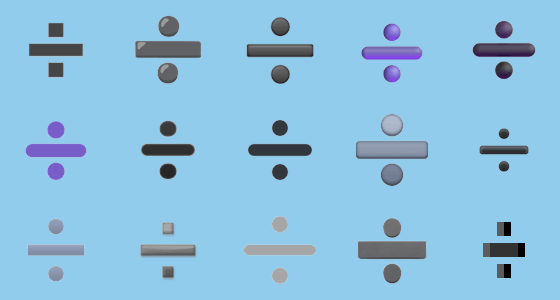Looking for an easy way to copy and paste Greek symbols like α (Alpha), β (Beta), γ (Gamma), and Ω (Omega)? You’ve landed in the right place! Whether you’re a student solving equations, a scientist writing formulas, a designer adding flair, or a content creator who loves aesthetics, these Greek alphabet characters are more useful than you think. From mathematical equations to scientific expressions, fraternity names, and even spiritual meanings, Greek symbols carry deep value and wide usage.
In this guide, you’ll find a one-click copy-and-paste list of Greek letters with their meanings, HTML codes, and common uses. Say goodbye to wasting time searching or memorizing shortcuts—just scroll, click, and paste! 🧠⚡
Greek Symbols Copy and Paste
Need to use Greek symbols like α (Alpha), β (Beta), π (Pi), or Ω (Omega) in your work? Whether you’re writing equations, coding a project, designing a logo, or crafting academic content, this tool gives you instant access to copy and paste Greek letters—no need to memorize codes or keyboard shortcuts.
Greek letters are everywhere—used in mathematics, science, engineering, philosophy, and even modern branding. From π (Pi) in geometry to Δ (Delta) in physics, these symbols hold powerful meanings and practical value.
🔎 What Are Greek Symbols?
Greek symbols are characters from the Greek alphabet, one of the oldest writing systems in the world, dating back to the 8th century BC. This alphabet originally evolved from the Phoenician script and laid the foundation for many modern alphabets, including Latin and Cyrillic.
Today, Greek symbols are used far beyond language. They’ve become universal symbols in mathematics, science, philosophy, engineering, statistics, and even modern branding and spiritual contexts. Each letter—both uppercase and lowercase—often carries symbolic meaning or is associated with specific concepts in various fields.
🧠 Key Characteristics of Greek Symbols
-
24 Letters: The Greek alphabet consists of 24 letters, each with an uppercase and lowercase form.
-
Phonetic Sounds: Originally, each symbol represented a specific sound in spoken Greek.
-
Symbolic Meanings: Many letters have taken on metaphorical or mathematical meanings over centuries.
-
Widely Used in Formulas: Greek letters are often used as variables or constants in equations.
-
Visual Appeal: Their elegant and distinctive forms make them popular in logos, tattoos, and typography.
🌍 Cultural and Practical Importance
-
In Science: Symbols like λ (lambda) represent wavelength, μ (mu) for micro units, and ρ (rho) for density.
-
In Religion: Alpha and Omega symbolize “the beginning and the end” in Christian theology.
-
In Society: Fraternities and sororities use combinations of Greek letters as their official names.
-
In Branding: Companies use Greek symbols to appear intellectual, classic, or elite.
📚 Common Uses of Greek Letters
Greek letters aren’t just part of an ancient alphabet—they’re powerful symbols used in modern contexts across disciplines. Here’s how they’re applied in real life:
➕ Mathematics
Greek symbols are essential in mathematical equations and formulas.
-
π (Pi) – Represents the ratio of a circle’s circumference to its diameter.
-
θ (Theta) – Commonly used for angles in trigonometry.
-
∑ (Sigma) – Denotes summation (the addition of a sequence).
🔬 Science & Physics
Scientists rely on Greek letters to express variables, constants, and units.
-
λ (Lambda) – Stands for wavelength in physics.
-
μ (Mu) – Represents the micro (10⁻⁶) prefix or the coefficient of friction.
-
Δ (Delta) – Indicates a change or difference in a quantity (e.g., Δx = change in position).
📊 Statistics
In statistics, Greek symbols define population parameters and test metrics.
-
σ (Sigma) – Represents population standard deviation.
-
α (Alpha) – Significance level (probability of Type I error).
-
β (Beta) – Probability of a Type II error or regression coefficient.
🏛️ Fraternities and Sororities
Greek letters are widely used in naming college organizations, especially in the U.S.
-
Examples: ΑΧΩ (Alpha Chi Omega), ΣΦΕ (Sigma Phi Epsilon)
-
They symbolize unity, tradition, and identity among members.
🌀 Spirituality and Symbolism
Many Greek letters carry deep philosophical or spiritual meaning.
-
α (Alpha) – Symbolizes the beginning.
-
Ω (Omega) – Symbolizes the end or completeness.
-
Often used in Christian theology and metaphysical texts.
🎨 Typography & Design
Designers and creatives use Greek symbols for visual appeal and branding.
-
Φ (Phi) – Used to represent the golden ratio in art and architecture.
-
Logos, tattoos, and brand names often feature Greek characters for uniqueness.
⌨️ How to Type or Insert Greek Symbols
Need to insert Greek letters into a document, website, or design project? Here are several quick and effective methods depending on your device or platform:
🖥️ 1. Using Keyboard Shortcuts (Windows/Mac)
While there’s no universal keyboard shortcut for every Greek letter, some can be typed using Alt codes (Windows) or Symbol Viewer (Mac):
On Windows (Alt Codes):
Hold down Alt and type the code using the number pad. Example:
-
Alt + 224= α (Alpha lowercase) -
Alt + 228= δ (Delta lowercase)
(Note: Alt codes may vary depending on your font and system.)
On Mac (Character Viewer):
-
Press
Control + Command + Space -
Search “Greek” and click the symbol to insert it.
📝 2. Insert in Microsoft Word or Google Docs
Microsoft Word:
-
Go to Insert > Symbol > More Symbols
-
Set font to “Symbol” or “Greek and Coptic”
-
Choose the Greek letter you want and click “Insert”
Google Docs:
-
Go to Insert > Special characters
-
Type “Greek” in the search box
-
Click any symbol to add it to your document
💻 3. Using HTML or Unicode (For Web Design)
When building websites or writing blog content, use HTML entities or Unicode values:
HTML Codes Examples:
-
α→ α -
Δ→ Δ -
π→ π
Unicode Examples:
-
U+03B1= α -
U+0394= Δ -
U+03C0= π
You can place these directly into HTML or CSS content for seamless display.
🔎 4. Using Character Map or Special Characters Tools
Windows Character Map:
-
Search for “Character Map” in the Start menu
-
Set font to “Arial” or “Times New Roman”
-
Choose “Greek” symbols and copy them manually
✅ Pro Tip: Bookmark this blog post and use it as your go-to reference for fast Greek letter insertion anytime!
📜 Greek Alphabet Chart – Full Table of Greek Letters
Explore the full Greek alphabet with their letter names, uppercase & lowercase forms, pronunciation, and common meanings or uses in modern fields like math, science, and philosophy.
| Letter Name | Uppercase | Lowercase | Pronunciation | Meaning / Common Use |
|---|---|---|---|---|
| Alpha | Α | α | /ˈælfə/ | Beginning, alpha particles, significance level in statistics |
| Beta | Β | β | /ˈbeɪtə/ or /ˈbiːtə/ | Beta testing, regression coefficient |
| Gamma | Γ | γ | /ˈɡæmə/ | Gamma rays, Euler’s constant |
| Delta | Δ | δ | /ˈdɛltə/ | Change/difference (Δx), delta waves |
| Epsilon | Ε | ε | /ˈɛpsɪlɒn/ | Small positive quantity in math |
| Zeta | Ζ | ζ | /ˈzeɪtə/ | Zeta function in mathematics |
| Eta | Η | η | /ˈiːtə/ | Efficiency (η), time constants |
| Theta | Θ | θ | /ˈθeɪtə/ | Angles in trigonometry, potential temperature |
| Iota | Ι | ι | /aɪˈoʊtə/ | “Not one iota” = very small amount |
| Kappa | Κ | κ | /ˈkæpə/ | Curvature, dielectric constant |
| Lambda | Λ | λ | /ˈlæmdə/ | Wavelength (λ), eigenvalues |
| Mu | Μ | μ | /mjuː/ | Micro- prefix (μm, μg), mean |
| Nu | Ν | ν | /njuː/ | Frequency, neutrinos |
| Xi | Ξ | ξ | /ksaɪ/ | Random variables in statistics |
| Omicron | Ο | ο | /ˈɒmɪkrɒn/ | Rare use, name of COVID-19 variant |
| Pi | Π | π | /paɪ/ | π = 3.14159, circular constant |
| Rho | Ρ | ρ | /roʊ/ | Density (ρ), correlation coefficient |
| Sigma | Σ | σ / ς | /ˈsɪɡmə/ | Summation (Σ), standard deviation (σ) |
| Tau | Τ | τ | /tɔː/ | Torque, time constants |
| Upsilon | Υ | υ | /ˈʌpsɪlɒn/ | Rarely used; upsilon meson in physics |
| Phi | Φ | φ | /faɪ/ or /fiː/ | Golden ratio (φ ≈ 1.618), magnetic flux |
| Chi | Χ | χ | /kaɪ/ | Chi-squared test in statistics |
| Psi | Ψ | ψ | /saɪ/ | Wave functions in quantum mechanics |
| Omega | Ω | ω | /ˈoʊmɪɡə/ or /ˈəʊmɛɡə/ | Electrical resistance (Ω), “the end” |
🔮 Greek Letters and Their Meanings
Greek letters are more than just alphabetic characters—they’re symbols packed with meaning, rooted in ancient history, spiritual beliefs, and modern design trends. Here’s how they’ve evolved and what they represent today:
📖 Symbolism in Religion, Culture, and History
Greek letters carry powerful connotations in philosophy, theology, and ancient civilizations:
-
Alpha (Α, α) – Symbolizes the beginning, often linked with divine origin. In Christian theology, God is referred to as the “Alpha and Omega.”
-
Omega (Ω, ω) – Represents the end or completion. It signifies wholeness and eternal truth in both religious and philosophical contexts.
-
Delta (Δ) – Symbol of change and transformation, widely used in both spiritual and scientific thought.
-
Phi (Φ) – Stands for the golden ratio, which ancient Greeks believed reflected universal harmony and beauty.
🎨 Use in Modern Logos, Tattoos, and Brands
Greek symbols are widely adopted in graphic design, branding, and body art for their aesthetic and intellectual appeal:
-
Sigma (Σ) – Used in the Six Sigma quality control method; symbolizes precision and perfection.
-
Pi (π) – Often appears in tech or mathematics-related logos to suggest intelligence and logic.
-
Psi (Ψ) – Associated with psychology (Ψ = psyche) and often seen in academic logos.
-
Omega (Ω) – Used in fashion (Omega watches), electronics, and luxury brands to suggest sophistication and completion.
Tattoos: Many choose Greek symbols like λ (lambda) or φ (phi) for tattoos to represent personal growth, balance, or scientific passion.
🏛️ Ancient Greek Roots and Linguistic Background
The Greek alphabet was developed around the 8th century BC and became one of the first alphabets to include vowels, differentiating it from earlier writing systems like Phoenician.
-
It laid the foundation for Latin, Cyrillic, and modern European scripts.
-
Many Greek letters carry etymological influence in scientific terms (e.g., psychology, philosophy, physics all stem from Greek).
-
The structure and phonetics of Greek helped shape Western thought, logic, and written communication.
Greek letters continue to bridge the ancient world with modern expression, symbolizing knowledge, power, mystery, and order. Whether you’re designing a logo, studying physics, or exploring symbolism, Greek characters remain deeply relevant.
📋 Greek Alphabet Unicode Table
| Greek Letter | Uppercase | Unicode (U+xxxx) | Lowercase | Unicode (U+xxxx) |
|---|---|---|---|---|
| Alpha | Α | U+0391 | α | U+03B1 |
| Beta | Β | U+0392 | β | U+03B2 |
| Gamma | Γ | U+0393 | γ | U+03B3 |
| Delta | Δ | U+0394 | δ | U+03B4 |
| Epsilon | Ε | U+0395 | ε | U+03B5 |
| Zeta | Ζ | U+0396 | ζ | U+03B6 |
| Eta | Η | U+0397 | η | U+03B7 |
| Theta | Θ | U+0398 | θ | U+03B8 |
| Iota | Ι | U+0399 | ι | U+03B9 |
| Kappa | Κ | U+039A | κ | U+03BA |
| Lambda | Λ | U+039B | λ | U+03BB |
| Mu | Μ | U+039C | μ | U+03BC |
| Nu | Ν | U+039D | ν | U+03BD |
| Xi | Ξ | U+039E | ξ | U+03BE |
| Omicron | Ο | U+039F | ο | U+03BF |
| Pi | Π | U+03A0 | π | U+03C0 |
| Rho | Ρ | U+03A1 | ρ | U+03C1 |
| Sigma | Σ | U+03A3 | σ / ς | U+03C3 / U+03C2 |
| Tau | Τ | U+03A4 | τ | U+03C4 |
| Upsilon | Υ | U+03A5 | υ | U+03C5 |
| Phi | Φ | U+03A6 | φ | U+03C6 |
| Chi | Χ | U+03A7 | χ | U+03C7 |
| Psi | Ψ | U+03A8 | ψ | U+03C8 |
| Omega | Ω | U+03A9 | ω | U+03C9 |
Tip: To use these in code or websites, just paste the Unicode or use HTML entities like α for α.
🔗 Related Symbols You May Like
If you found Greek symbols useful, you’ll love exploring these other symbol collections. Each set serves a unique purpose—from equations and code to creative design:
➕ Math Symbols
- Perfect for formulas, equations, and academic work:
- √ ∞ ≈ ∑ ∆ ± ≤ ≥ ∫
🔬 Scientific Symbols
- Used in physics, chemistry, and engineering:
µ Ω ° ∇ λ Δ τ
🔤 Latin Letters & Foreign Alphabets
- Explore unique characters from other languages and cultures:
Æ Œ ß ñ ç ж я ש
💰 Currency Symbols
- For financial content, e-commerce, or reports:
$ € ¥ ₹ ₩ ₿ ₨
⭐ Bonus: Emoji Symbols
- Add emotion or fun to your content with emoji combos:
🎓 ✍️ 📚 🔬 🧠
FAQs❓
Q1. What is the most used Greek letter?
Pi (π) is arguably the most used Greek letter, especially in mathematics and science, where it represents the ratio of a circle’s circumference to its diameter. Other highly common ones include Delta (Δ) for change, Sigma (Σ) for summation, and Alpha (α) in statistics and physics.
Q2. How do I insert Greek symbols in Word or Excel?
In Microsoft Word:
-
Go to Insert > Symbol > More Symbols
-
Choose Greek and Coptic from the subset dropdown
-
Click the symbol to insert
In Excel:
-
Use the same method or insert via ALT codes like
Alt + 224for α
Q3. Are Greek letters the same in HTML and Unicode?
Yes, they represent the same characters but use different formats:
-
HTML Code:
α= α -
Unicode:
U+03B1= α
Both render the same symbol but are used in different coding environments.
Q4. Can I use Greek symbols in coding or math apps?
Absolutely. Greek symbols are widely supported in:
-
LaTeX: for scientific and academic writing
-
HTML/CSS: for web development
-
Python, MATLAB, R: via Unicode or symbolic libraries
-
Math editors and online calculators
Q5. What’s the difference between Latin and Greek alphabets?
-
Greek alphabet has 24 letters, some of which are visually similar to Latin but have different meanings and sounds.
-
Latin alphabet, used in English and most European languages, is derived from Greek but adapted and expanded over time.
Greek is more symbolic and often used in technical, academic, and philosophical contexts.
✅ Conclusion
Greek symbols are powerful, versatile, and beautifully designed. Whether you’re using them for math, science, design, or digital content, they make your work clearer and more engaging.
With our easy copy-and-paste table, you can now skip the code hunting and insert any Greek letter with a single click. Fast, efficient, and compatible across platforms.
📌 Bookmark this page for future use and share it with your friends, classmates, or coworkers who might need Greek symbols too.






